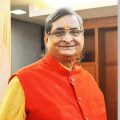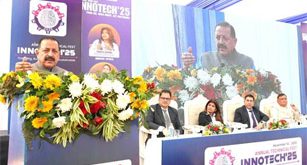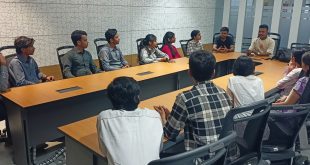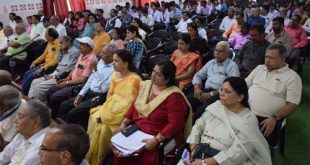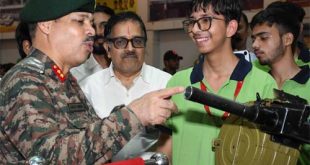Patent Information for Common People By Dr.Paresh Kumar C.Dave, Founder Director of IP Moment
Newswave@ New Delhi
“Intellectual Property Rights” is not a big elephant and not a cup of tea. “Patent” is a very simple language. How simple it is to file and get a patent in India. “Patent” is one of the important intellectual property rights.

What is a Patent?
A patent is an exclusive right granted for an invention, which is a product or a process that provides, in general, a new way of doing something, or offers a new technical solution to a problem. To get a patent, technical information about the invention must be disclosed to the public in a patent application.
Some of the examples of products are Moon walking Shoes, Animal toy, Electronics items, medicines, and as simple as tooth brushes, etc. Further, for process examples, “Method of exercising a Cat”, “Process of making roti using innovative apparatus”, “Process for preparation of detergent used in washing machine”, etc. Devices or apparatuses can also be patented.
What is a purpose of the patenting system?
The main purpose of the patenting system is to encourage the development of new inventions, and also to encourage the disclosure of these new inventions. Inventors are often hesitant to reveal the details of their invention, for fear that someone else might copy it. Patent is a tech-legal document, which is an agreement between the inventors and a government.
The inventors declares their invention to the government for publishing it to the general public, against which government agrees to give monopoly rights to the inventors/applicants for 20 years and they can exclude others from using, selling, offering for sell or importing the patented invention products or products prepared using the patented processes.

For further understanding the patenting system, we discuss in little detail. When the patent is published with all the details of the invention, other learned people of the society learn about the invention. More people then be inspired to think up enhancement, improvements or alternatives to the patented invention
Presumably they would then patent these alternatives. And then society benefits by having two inventions rather than one. By this way, the society get benefit and get cheaper and more improved products and products by using more improved processes. Patented inventions have, in fact, pervaded every aspect of human life, from “electric bulb” (patents held by Edison and Swan) and plastic (patents held by Baekeland), to ballpoint pens (patents held by Biro), and microprocessors (patents held by Intel, for example).
Why to file a Patent?
The 20 years monopoly also gives the inventor anopportunity to recoup the investments he or she made during the development of his or her invention. The inventor can start own product manufacturing or can form partnership with others who has money to invest. Alternatively, the inventor may also license the invention to the existing manufacturer. By doing this the inventor can earn money. The inventor can stop thieves from stealing the invention once he or she patents the invention. The inventor can also reduce the competition in the market by stopping others. The inventor can enjoy the leadership position by way of patenting their invention. The inventor can also get recognition for their invention.
Is a Patent Valid in every country?

Patents are territorial rights. Which means, if one can get a granted patent in India, then he or she can only have right in India. In general, the exclusive rights are only applicable in the country or region in which a patent has been filed and granted, in accordance with the law of that country or region. If the inventor has to practice their invention in any other country they have to file a patent application in the respective country.
Who can file a Patent Application?
According to the law, the inventor, or a person to whom the inventor has assigned (for example “Patent Agent”) or is under an obligation to assign the invention (“Patent Applicant” or “Patent Assignee”), may apply for a patent, with certain exceptions. If the inventor is deceased, the application may be made by legal representatives, that is, the administrator or executor of the estate. Let me explain, Patent agent term in little detail, “Patent Agent” is a professional who is entitled (whose name is registered by the Indian Patent Office under the Indian Patent Act 1970) to draft and file patent applications on the behalf of an applicant.
Further, the inventor(s) can visit Indian Patent Office website (www.ipindia.nic.in ) or may contact to nearest Patent office. In India, we have Indian Patent Offices at four different places; these are New Delhi, Mumbai, Kolkata, and Chennai. One can find contact details on the patent office website.
The Indian patent office supports individual inventors to provide relevant information. The patent filing process is not difficult at all; one has to read thru the instructions properly. However, the inventor has to understand that patent application is a techno-legal document and whatever they will provide or write information under the section of “Claim” in the patent application it is protected.
Different sections of the Patent application?
The patent application has the following main sections: Title, Applicants name and their details, Preamble of the description, Description, Claims, and Abstract. “Claims” are known as the heart of the patent application. It is more important part of the patent application, whatever the inventor has claimed for their invention it is protected. Let me elaborate to simplify further, for our physical property we are protecting it by building boundaries or compound walls for our house. Likewise, invention is protected whatever one has claimed under the claim section.
Costing for filing a Patent Application?

The costing of the patent application is mainly divided into two types: Official government fees and Professional fee. Official government fees are payable to the Indian Patent Office and it is a mandatory expense. Under the Indian Patent Act 1970 has official filing fees are varied based on the type of applicant. The Indian Patent Office divides it in three types:
Natural person / Startup – This essentially deals with patent applications filed by one or more individuals as applicants or by a Startup (which is registered under Startup India scheme). For Natural person or startup there are two mandatory fees: Filing fees – Rs. 1600/- INR and “Request for examination” fees – Rs. 4000/- INR. If one is paying thru physically then one has to pay 10% more fees.
Small Entity – Generally a company (as an applicant) can qualify as a small entity if the company is engaged in:Manufacture and production of goods – The investment in plant and machinery is less than Rs. 10 crores. Further, provides or rendering services – The investment in equipment is less than Rs. 5 crores. In brief, if the company is registered under MSME government scheme then they are entitle to claim as Small Entity. For Small Entity there are two mandatory fees: Filing fees – Rs. 4000/- INR and “Request for examination” fees – Rs. 8000/- INR. If one is paying thru physically then one has to pay 10% more fees.
Other than small entity – This essentially relates to a large entity (big companies). Any enterprise which doesn’t qualify as a small entity will be covered under this heading.
All the official fees mentioned above are only for 30 pages and 10 claims, if one has more pages and claims then has to pay some extra amount. Please note that all the filed patent application (only complete specification) are examined only after the publication. The Indian patent office is publishing the patent application (only complete specification) after 18 months from the date of filing of first patent application. There is also provision of getting it published earlier than the 18 months, for that the applicant has to pay some extra fees (for example, for natural person – it is 2500/- INR; for small entity it is 6250/- INR; and for large entity it is 12500/- INR).
Professional Fees
If inventors or applicant is deciding to hire a patent firm or patent agent, professional fee of the patent firm or a patent agent will also be applicable in addition to the official government fee. Although, it is not mandatory to hire a patent firm and you can undertake the whole patent process yourself.
The right professional firm can provide immense value to your invention and help you put across an application in the best manner possible. However, this professional help comes at a cost and this cost can vary based on the professional patent firm or patent agent is hired. The cost in general may vary from 15000/- to 1,00,000/- depending on the person one is hiring. These professional fees include patent drafting, patent drawing preparation, and patent filing at the Indian Patent Office.
Criteria of getting patent granted (patentability)?
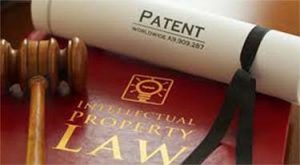
There are numerous conditions that must be met in order to obtain a patent and it is not possible to explain here in more detail. Generally, in order to get the patent application granted or accepted or issues, one has to remember “NUNS” rule.
N = Novelty – The invention must be novel not published or used earlier anywhere in the world.
U = Usefulness – It should be capable of industrial application.
N = Non-obvious – It should not be obvious to the PHOSITA (Person Having Ordinary Skill In The Art).
S = Statutory – The invention must meet statutory requirements of the respective country. It should not fall within the provisions of section 3 and 4 of the Patents Act 1970.
Patent processing steps and time frame?
The inventor has to first write a detail description of their invention having all the details of the products or apparatuses or the manufacturing processes. Then inventor is advise to perform the prior art search to find that invention is not earlier used or published anywhere. The prior art search also can help inventor to draft a claim of the patent application. Next step is to draft a patent application along with preparation of drawings (which are acceptable by the patent office).
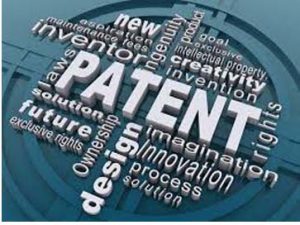
The inventor can file a patent application to the Indian Patent Office. The inventor has to pay official fees to the Indian Patent Office. The inventor has to file a patent application with three main forms, Forms 1, 2, 3, and 5. The inventor also has to file a request for examination by filing a form 18. The Indian Patent Office then publishes the patent application (only complete specification) after 18 months from filing date of the patent application (if not requested to publish early by filing form 9).
The patent office carries out the examination according to the Indian Patent Act 1970. The controller of the patent office first issues – “First examination report – FER”. In which the controller provides the detail examination of the patent application and if the controller has any objection or requires clarification then ask to the applicant. The inventor/applicant has chance to file a response to the FER. If the patent application meets all the required criteria and then the controller of the patent office grants the patent. In generally, it takes around 3 to 5 years in India (as of today’s pendency).
Once the patent application is granted then the applicant has to pay renewal fees (or also known as patent maintenance fees) for the term of the patent, which is 20 years from the first filing date of the patent application. For the natural person total renewal fees for 20 years will be 80,000/- INR (total). To explain in more detail, first five years, each year annual fee is 800/-; then for next five years annual fee is 2400/- INR; then for next five year annual fee is 4800/- INR; and in last five years annual fee is 8000/- INR.
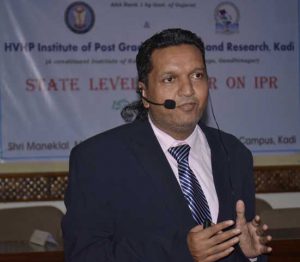 The above details are provides glimpse of the patent and patenting processing in the India. More details can be found on the Indian Patent Office website, www.ipindia.nic.in and the also contact to the author, Dr. Pareshkumar C. Dave, Founder and Director of IP Moment, New Delhi. His contact no. 8920004700 and email : paresh.dave@ipmoment.com
The above details are provides glimpse of the patent and patenting processing in the India. More details can be found on the Indian Patent Office website, www.ipindia.nic.in and the also contact to the author, Dr. Pareshkumar C. Dave, Founder and Director of IP Moment, New Delhi. His contact no. 8920004700 and email : paresh.dave@ipmoment.com
 News Wave Waves of News
News Wave Waves of News

